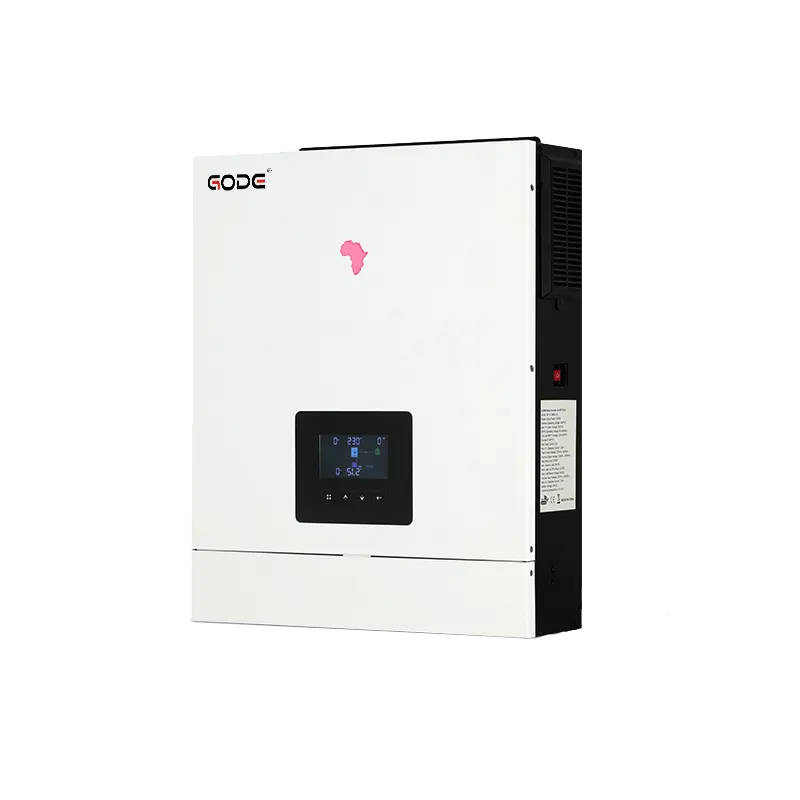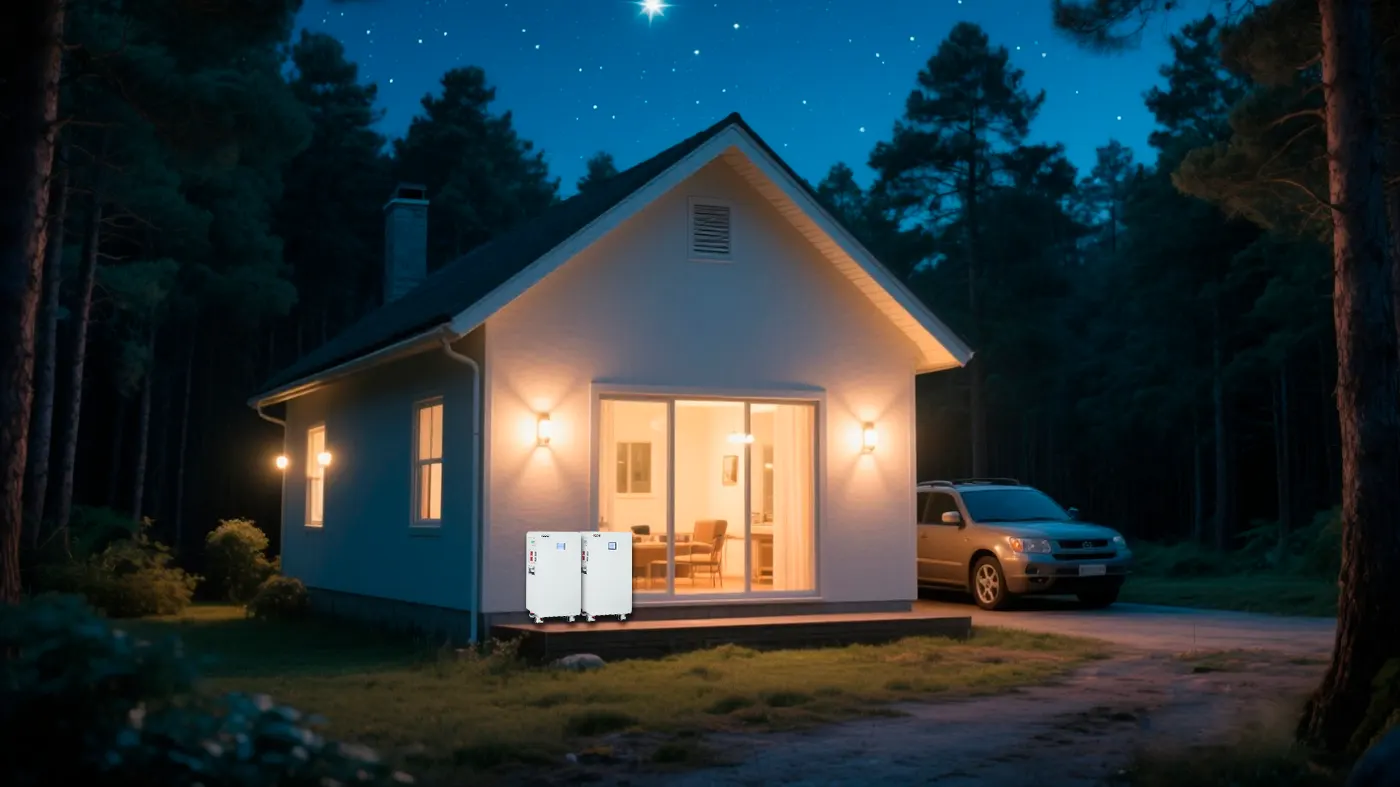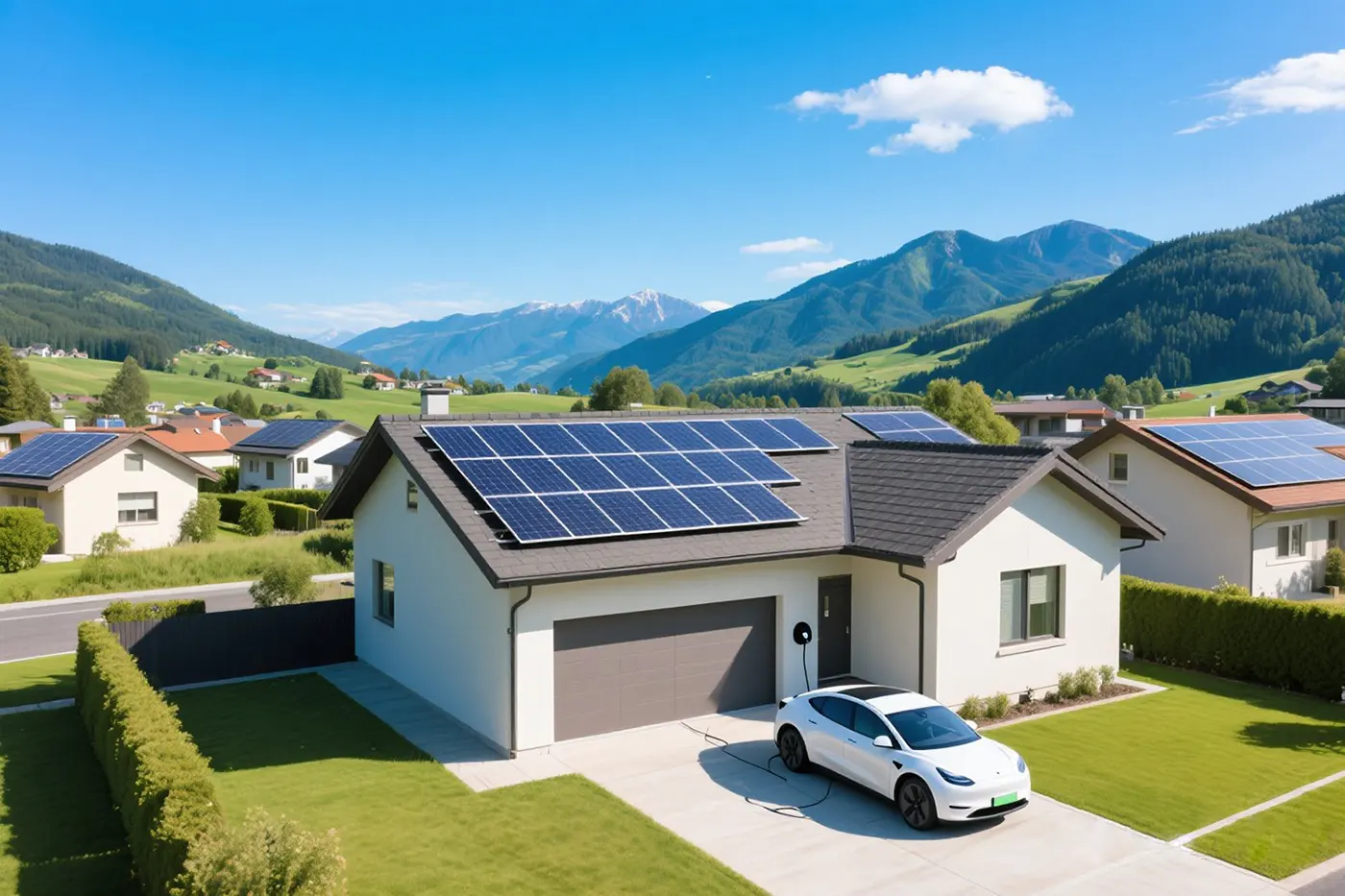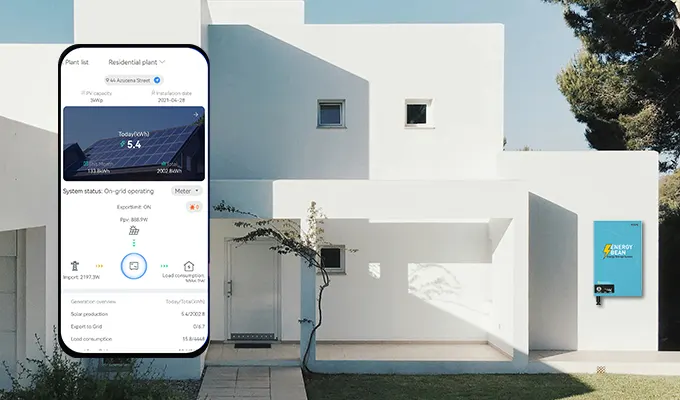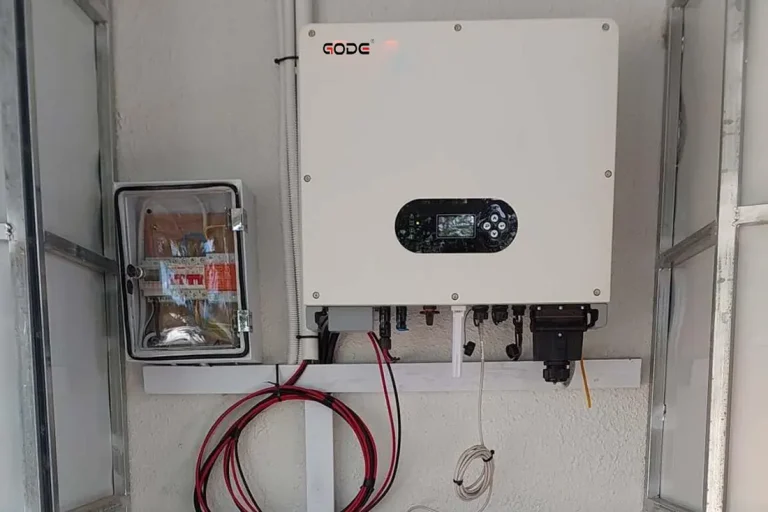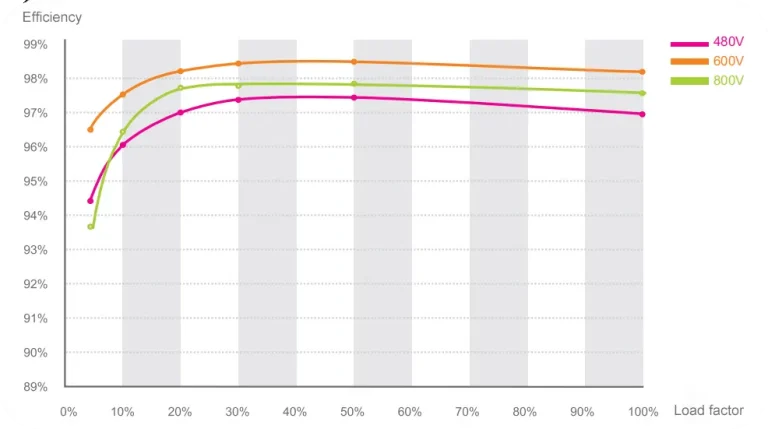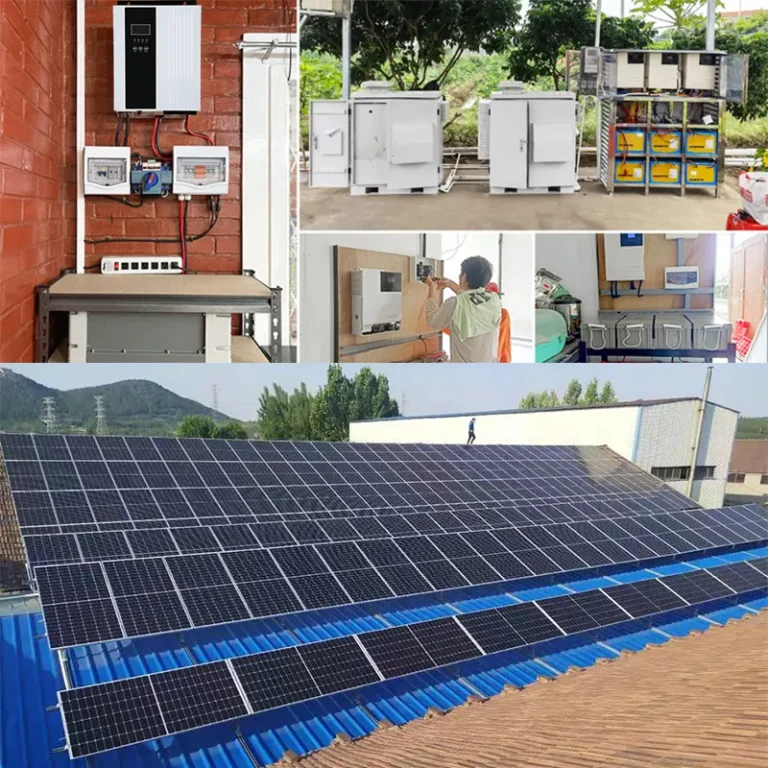27 August, 2025
Ultimate Guide to PV-Storage Hybrid Inverters: Residential, Commercial & Off-Grid Solutions
As the core control unit of photovoltaic (PV) energy storage systems, the PV-storage hybrid inverter not only undertakes the critical task of DC-to-AC power conversion, but also leverages intelligent algorithms to achieve seamless grid-connected/off-grid mode switching, optimized battery charging/discharging, and advanced energy dispatch management.
This article systematically analyzes the technical principles of PV-storage inverters, typical application solutions, and scientific selection strategies, providing guidance for system construction across various scenarios.
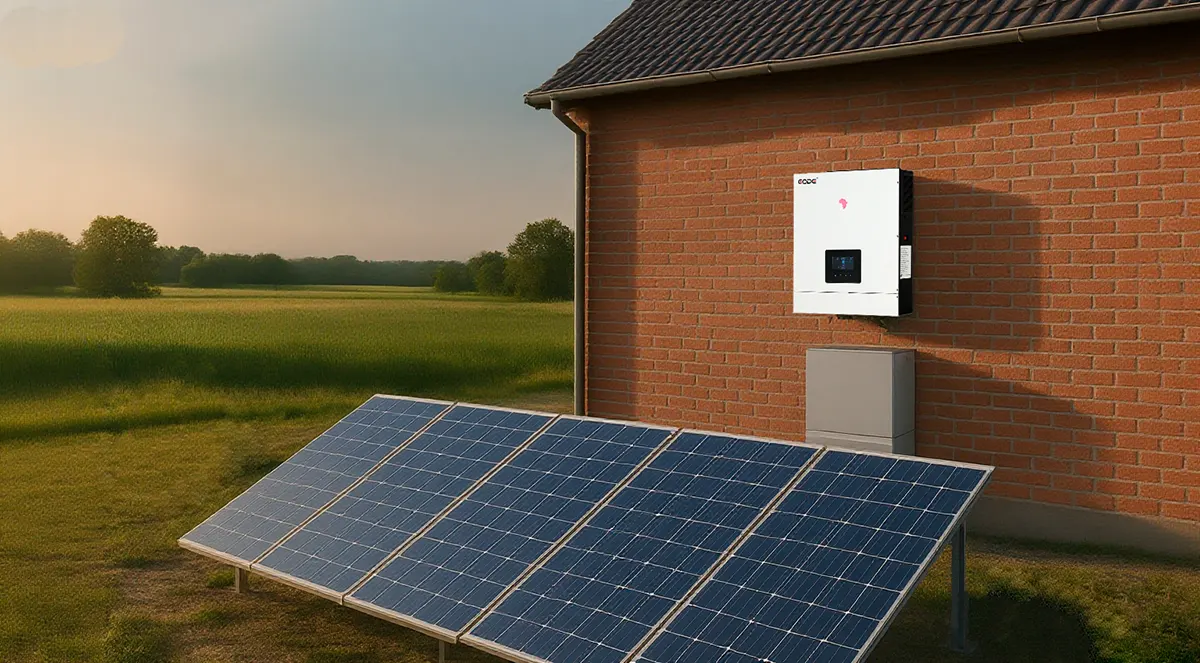
Working Principle of PV-Storage Hybrid Inverters
Modern PV-storage hybrid inverters are intelligent power electronic devices that integrate PV inversion, battery management system (BMS), and grid coordination control. Their working mechanism achieves efficient energy conversion and management through the following four collaborative processes.
DC Side Processing
By using a digital MPPT controller, the inverter continuously scans the PV array’s output curve, dynamically adjusting voltage and current parameters. This ensures operation at the maximum power point under varying sunlight intensity and temperature conditions, increasing daily energy yield by 3%-5%.
Inversion Conversion
Using a full-bridge IGBT topology, the inverter converts DC electricity into sinusoidal AC power. With LC filtering circuits to suppress harmonic distortion, it outputs grid-compliant AC power or off-grid load supply, ensuring stable operation under both scenarios.
Energy Storage Management
By utilizing real-time data on battery State of Charge (SOC) and State of Health (SOH), the inverter applies adaptive charge/discharge algorithms to regulate the storage system, smoothing PV fluctuations, achieving peak shaving and valley filling, and providing reliable backup power.
Grid Interaction
In grid-connected mode, the inverter uses a Phase-Locked Loop (PLL) to synchronize with grid voltage and frequency. In off-grid mode, it applies Virtual Synchronous Generator (VSG) technology to emulate the behavior of traditional generators, ensuring stable supply to sensitive loads. During grid faults, the system switches in under 10ms, guaranteeing uninterrupted power.
Typical Application Scenarios of PV-Storage Hybrid Inverters
Off-Grid Solution
Application Scenario: For regions with weak grid infrastructure or frequent power outages due to natural disasters, off-grid PV-storage systems provide reliable standalone power supply. According to World Bank data, about 750 million people worldwide still lack stable electricity access, making off-grid hybrid inverters an economically efficient solution.
System Composition: 3 kW–12 kW off-grid PV-storage inverter + high-efficiency monocrystalline PV modules + LiFePO₄ battery pack + intelligent diesel generator.
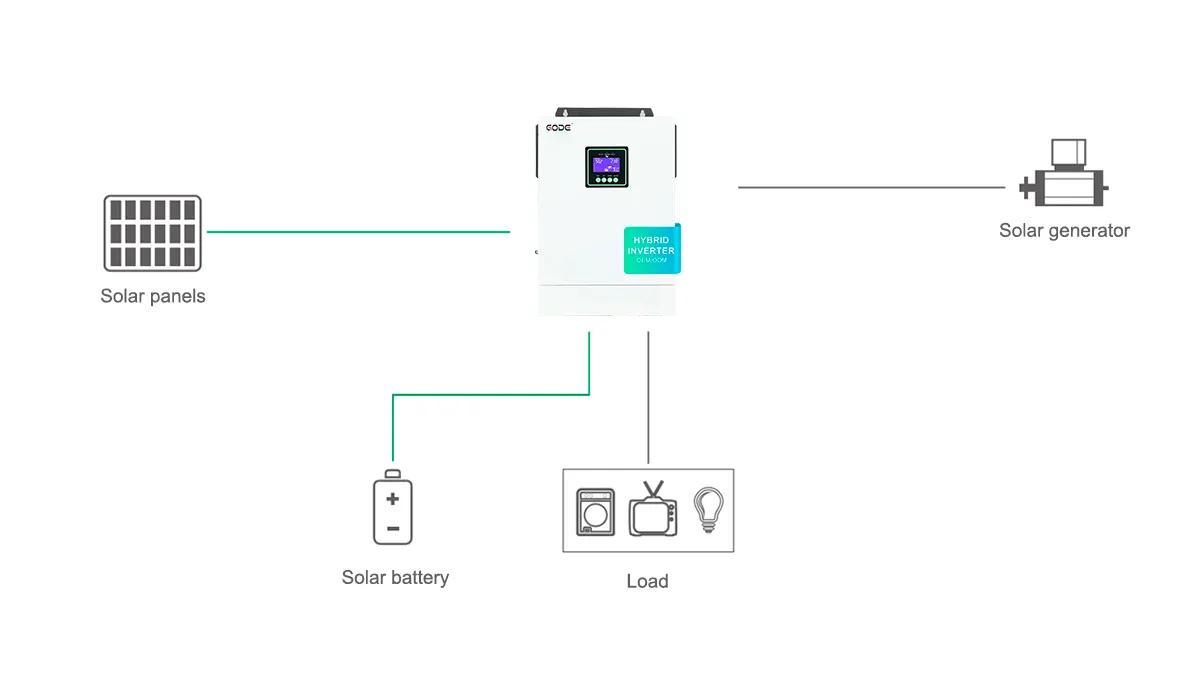
Operation Strategy: Adopting a three-tier “PV priority –storage buffer–diesel backup” power supply logic, the intelligent load management algorithm prioritizes PV generation. When battery SOC drops to 20%, the diesel generator starts, while optimized fuel consumption programs reduce O&M costs by over 30%.
Residential PV-Storage Integrated Solution
Application Scenario: With the global energy crisis and rising electricity prices, residential PV-storage systems have become the core solution for household energy autonomy. The EU’s “Clean Energy Plan” requires residential PV penetration to reach 50% by 2030. PV-storage inverters with energy storage functionality enable both “self-consumption + emergency backup,” reducing household electricity costs by 40%-60%.
System Composition: 3 kW–15 kW bidirectional storage inverter + rooftop PV modules + high-energy-density lithium batteries + intelligent energy management platform.
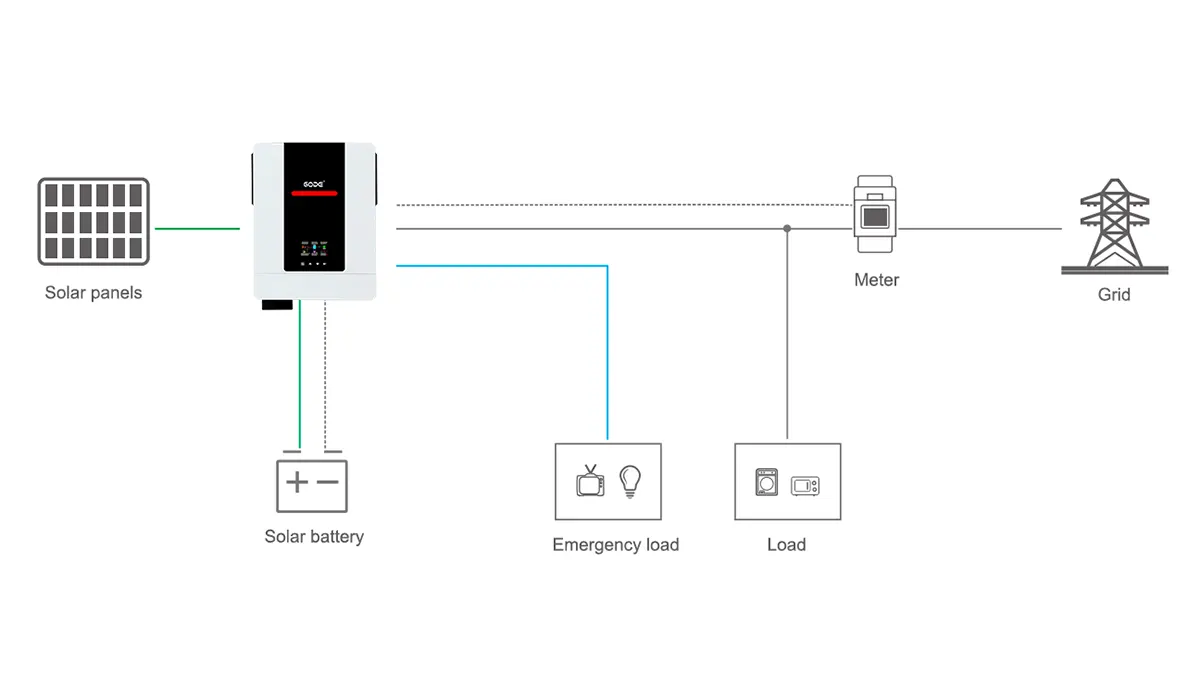
Operation Strategy: Featuring a dual-mode “time-of-use arbitrage + emergency backup” logic, daytime PV generation prioritizes household loads, with surplus stored in batteries at a 0.5C rate. During peak hours (19:00–22:00), stored energy is discharged, while in grid outages, the inverter switches to off-grid mode in 0ms, ensuring uninterrupted supply for critical loads.
Commercial & Industrial Park PV-Storage Microgrid Solution
Application Scenario: Large commercial and industrial users face concentrated loads and high peak electricity prices. PV-storage inverters build local microgrids that enable PV self-consumption, surplus storage, peak shaving, valley filling, and demand-side management.
System Composition: 50 kW–500 kW C&I PV-storage inverter + distributed PV plant + modular storage container + EMS.
Operation Strategy: Using big data and AI load forecasting models combined with time-of-use pricing curves, the EMS optimizes storage scheduling. Daytime PV prioritizes loads, with surplus stored; during peak hours, the system discharges to reduce demand charges, saving 20%-35% annually. It also supports reactive power regulation and grid frequency regulation, enabling park-level energy autonomy and ancillary services.
Scientific Selection Guide for PV-Storage Hybrid Inverters
Power Rating Matching
The inverter power configuration should follow the principle of coordinated matching among source-storage-load, ensuring accurate calculation to avoid “over-sizing a small system” or overloading.
Formula: Inverter rated power = (PV array power × 1.2) / 0.9, It must simultaneously meet both storage charge/discharge power and load peak demand
Matching with PV Array
Considering PV module temperature coefficients and shading losses, the recommended ratio of PV array power to inverter rated power is 1.2:1 to 1.5:1.
Example: For a 50 kW PV array, a 40 kW inverter should be selected, which can improve actual operating efficiency by 5%-8%.
Matching with Load
The inverter’s rated AC output power must meet maximum load demand. For impact loads (e.g., motors, compressors), startup current (typically 3-5 times rated current) must be considered. Select inverters that support short-term overload capability (e.g., 120% overload for 10 seconds).
Matching with Energy Storage Battery
Based on battery capacity (C) and charge/discharge rate (1C/0.5C): Inverter charge/discharge power = Battery voltage
× Rated current.
Reliability and Protection Level
Inverter reliability is the key guarantee for long-term stable system operation. According to 2025 new technical standards, Mean Time Between Failures (MTBF) should be ≥100,000 hours.
Comprehensive evaluation should be based on the following dimensions:
Hardware Design: Automotive-grade IGBT power devices, liquid cooling system, and independent air duct design to prevent dust accumulation; stable operation under -30 ℃ to +60 ℃ wide temperature range.
Protection Level: Outdoor devices should meet IP65; for coastal areas, models with anti-salt-mist corrosion protection are recommended; for indoor installation, IP20 may be sufficient.
Protection Functions: 16 safety protection mechanisms, including grid over/under voltage, output overcurrent, battery reverse connection, anti-islanding, lightning protection, over-temperature protection, etc.
Energy Storage Management Capability Evaluation
The Energy Storage Management System (EMS) is the brain of the PV-storage inverter. Mainstream products in 2025 should have the following core capabilities to ensure safe and efficient operation:
Battery Compatibility: Supports multiple battery types (lead-acid, LiFePO₄, NMC, LTO, etc.), compatible with different brands, scalable capacity, with automatic State of Health (SOH) diagnostics.
Charge/Discharge Control: Uses three-stage intelligent charging algorithm, precise control of charge/discharge cutoff voltages, user-defined charging/discharging periods, with cell balancing functionality.
SOC Estimation Accuracy: Uses Kalman filtering + Ampere-hour integration with temperature compensation, achieving SOC estimation error≤3%, preventing overcharge/discharge and extending battery life.
Intelligent & Communication Functions
Intelligent functions improve system management efficiency and user experience. Key features include:
Remote Monitoring: Supports RS485, Ethernet, Wi-Fi; connects to cloud platforms for remote data collection, status monitoring, and fault alarms.
Smart Scheduling: Enables remote optimization of charge/discharge strategies; supports peak-valley electricity scheduling, automatically executing arbitrage schemes.
Multi-Inverter Collaboration: For large-capacity systems, supports parallel operation of multiple inverters, ensuring power sharing, load balancing, and system scalability.
Conclusion
As the core control center of PV-storage systems, the technical performance and proper selection of hybrid inverters directly determine the project ROI, system stability, and LCOE. In practical applications, one must comprehensively evaluate the application scenario, load characteristics, local grid parameters, and policy requirements, selecting high-efficiency models with international certification.
In the future, with the integration of power electronics and energy storage technologies, hybrid inverters will evolve toward higher efficiency, higher intelligence, and lower cost.
share

